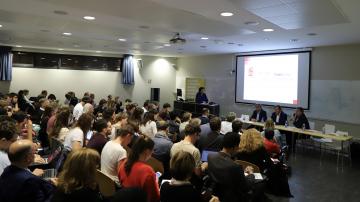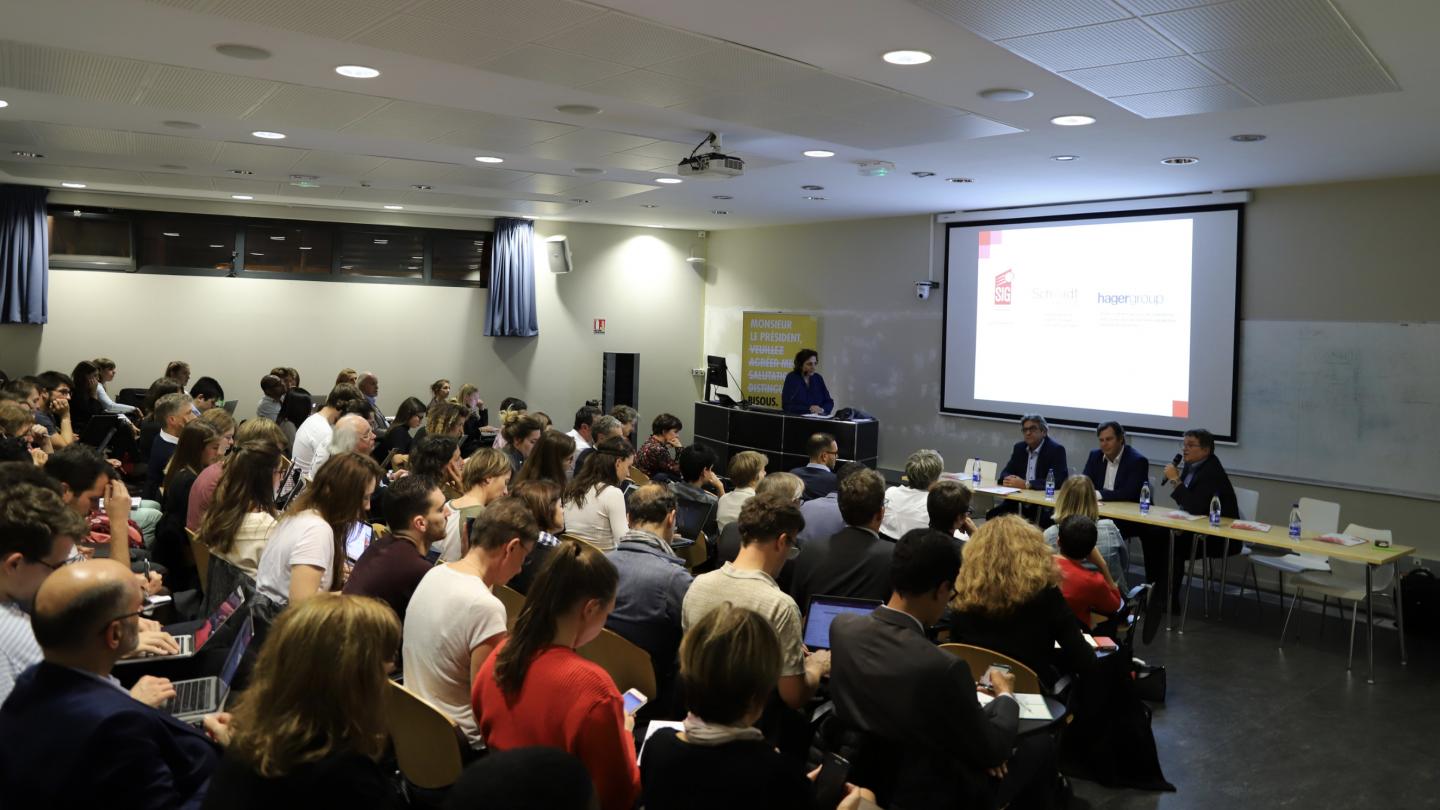
The effects of digitization, the rise of e-commerce, the growing power of social networks on brands and the new standards of quality and experience imposed by certain pure players on the internet are changing the relationship between retailers and their customers. Traditional distribution networks have to adapt. Even if they succeed in this, physical shops still have a long way to go. These themes were addressed at the flagship conference organized by the Customer Experience Chair of EM Strasbourg Business School on the theme “Customer Experience: a key factor in the change in our consumption patterns”.
“For us, it's a question of the company’s survival. No more, no less. ” When asked about the challenge for the SIG Strasbourg basketball club to successfully negotiate the change in customer experience, Martial Bellon did not hide behind the emotion of top-level sport, nor behind the attractiveness, and sporting performance of the club he presides over. “We are a top-level sports entertainment company, but we are also a company that has to look after its customers, whether they are fans who come to enjoy some sport or partners who come for business,” he adds. The question of the customer experience is implicitly raised, as it must be unique before, during, and after each match. It is also subject to profound changes, particularly driven by the rise of digital technology.
Digital for the Customer Experience... and for Salespeople
This question is not based on a ‘simple’ opposition between digital and physical. Of course, digital is setting new standards for retailers. But physical shops are an ideal place to create unique brand experiences. This is true in sport, but not on its own. The complementary nature is obvious: “At Schmidt Groupe, we use digital to help customers find inspiration and imagine the product themselves, and to get an idea of the price,” explains Franck Ostertag, Group Marketing Director for interior design (kitchens, bathrooms, dressing rooms, etc.), “the rest is done in-store, with the sales team”. In a business where the relationship of trust is the primary purchasing criterion for customers, digital cannot therefore replace physical, and going to the shop is an absolutely essential moment, when a “dream” becomes a reality.
"Digitization is an ambition, but not an end in itself"
Angélique Fortuné
“Digitization is an ambition, but not an end in itself,” confirms Angélique Fortuné, Head of Customer Care at BNP Paribas Retail Banking. “On the other hand, it should enable us to deliver more value for our customers more quickly and allow our advisors to highlight their expertise and concentrate on tasks with higher added value.” The challenge, however, is to imagine digital solutions with a very simple, personalized and transparent approach, in line with what stakeholders in the digital economy are looking for. Certain aspects of fintech challenge banking institutions head-on, including those operating on global scale, force them to ask questions of themselves.
At Hager Group, digitization has also had a profound impact: long confronted with a clientele of electrical professionals, the company sees how the Internet of Things and the connected home are gradually broadening this spectrum. “We are becoming a service operator for the end customer and have to be available almost 24 hours a day,” says Martin Kaiser, Chief Executive of Hager Services. “We also need to provide an intuitive, seamless customer journey. In this context, one of our challenges is to succeed in integrating our distribution partners and electricians, into this process,” he continues. In the same spirit, Angélique Fortuné reminds us that this digitization of the customer experience must mobilize both the advisors who are in direct contact with customers and the internal support functions. With multi-disciplinary teams organized in startup mode, projects can go as far as defining new business models.
From Experience to Customer Satisfaction
But the quest for a new customer experience only makes sense if it leads to improved customer satisfaction, a claim that is true both in online commerce and in physical shops. “If the latter are not in danger of disappearing because of the effects of the digital revolution, they will have to integrate the reality of changing consumption patterns in which quality, atmosphere, and the feeling of sharing a unique experience will be just as important as the feeling of buying goods at the right price,” said Claire Roederer, Associate Lecturer and Head of the Customer Experience Chair at EM Strasbourg. One thing is sure: smartphone in hand, they will share this experience on social networks as much as they will compare the offer they have been given live with that of dozens of other physical or digital outlets. In the context of the emergence of phygital, where the balance of power is clearly shifting in favour of the consumer, retailers will have everything to gain... or lose!
Relive the conference by downloading the presentations
by Olivier Badot and Angélique Fortuné
